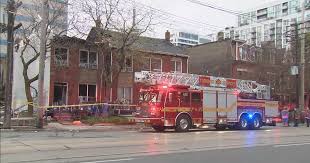
Introduction
Fires in urban areas pose significant risks to public safety, property, and the environment. Toronto, as one of Canada’s largest cities, has faced its share of fire-related incidents recently. Understanding the causes, implications, and response mechanisms is crucial for residents and city planners alike, especially as fire season approaches.
Recent Incidents
Over the past month, Toronto has experienced several notable fire incidents, highlighting the persistent danger posed by both structural and wildfires. In mid-September, a four-alarm fire broke out in a high-rise apartment building in the downtown core. The blaze resulted in the evacuation of hundreds of residents and led to multiple injuries, although fortunately, no lives were lost. The Toronto Fire Services (TFS) reported that the cause of the fire was still under investigation, but preliminary findings revealed that it likely originated from faulty electrical equipment.
In a separate incident a week later, firefighters battled a large blaze at a commercial building in East York. This fire, which threatened nearby structures, was reported around 1 AM and required over 50 firefighters to bring it under control. The response was swift and coordinated, allowing for minimal damage to surrounding properties.
Fire Safety Measures and Public Awareness
In light of these events, the importance of fire safety cannot be overstated. The TFS has emphasized the need for homeowners and businesses to conduct regular fire safety inspections and ensure that smoke detectors are functional. Public awareness campaigns focusing on fire prevention strategies are being ramped up, including workshops and community alerts.
The city is also increasing its investment in fire education programs aimed at reducing the number of incidents. Adequate training for both residents and businesses about how to respond in case of a fire is critical in minimizing risks.
Conclusion
Toronto’s recent fire incidents serve as a stark reminder of the dangers posed by fires, whether in residential areas or commercial establishments. The city’s proactive stance on fire prevention and public education aims to reduce the frequency and severity of such events. As residents, it is essential to stay informed, participate in community safety programs, and always prioritize fire safety in daily activities. The city’s ability to manage fire risks will depend on both governmental efforts and public cooperation as it moves forward.


